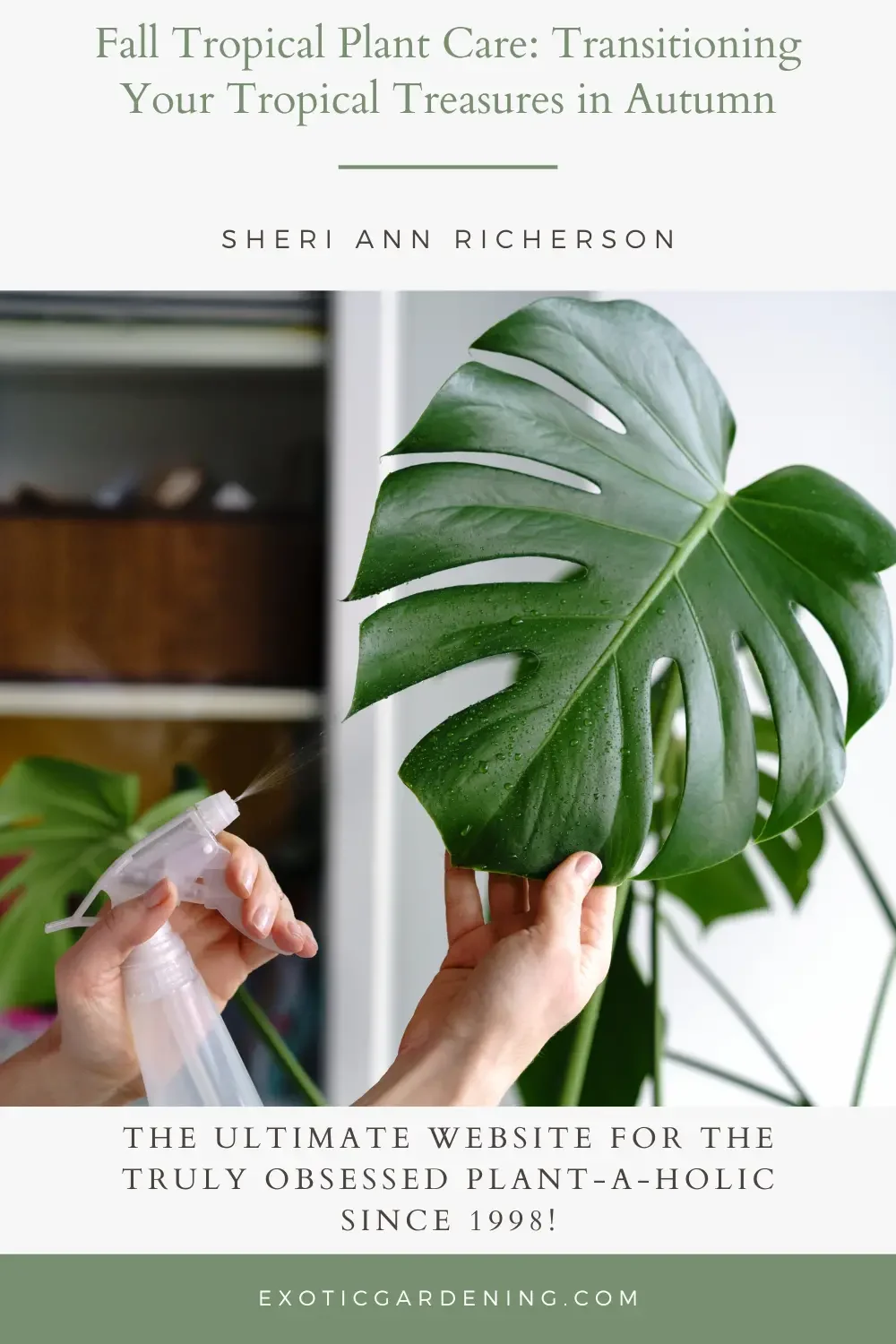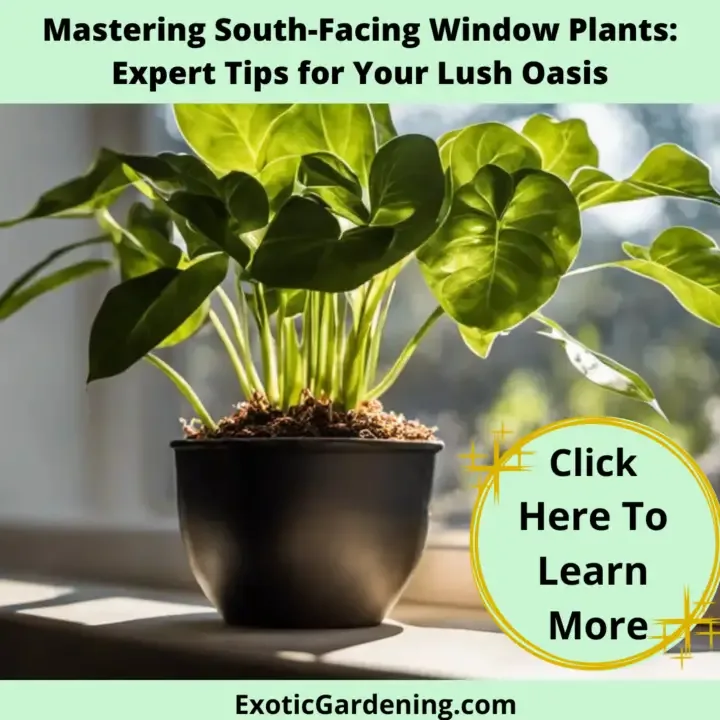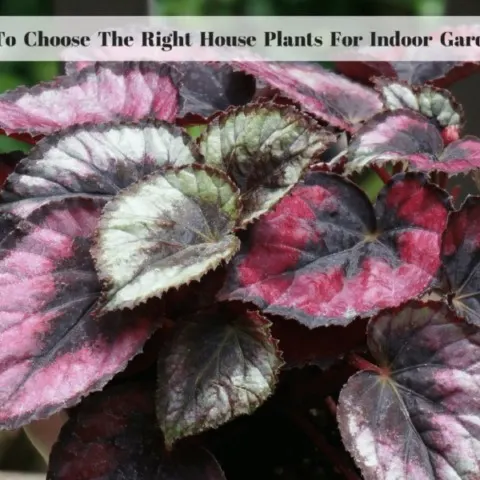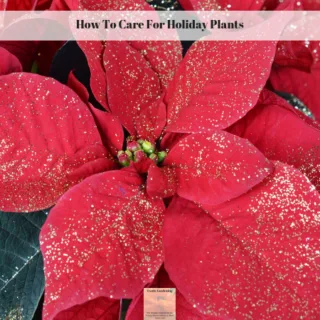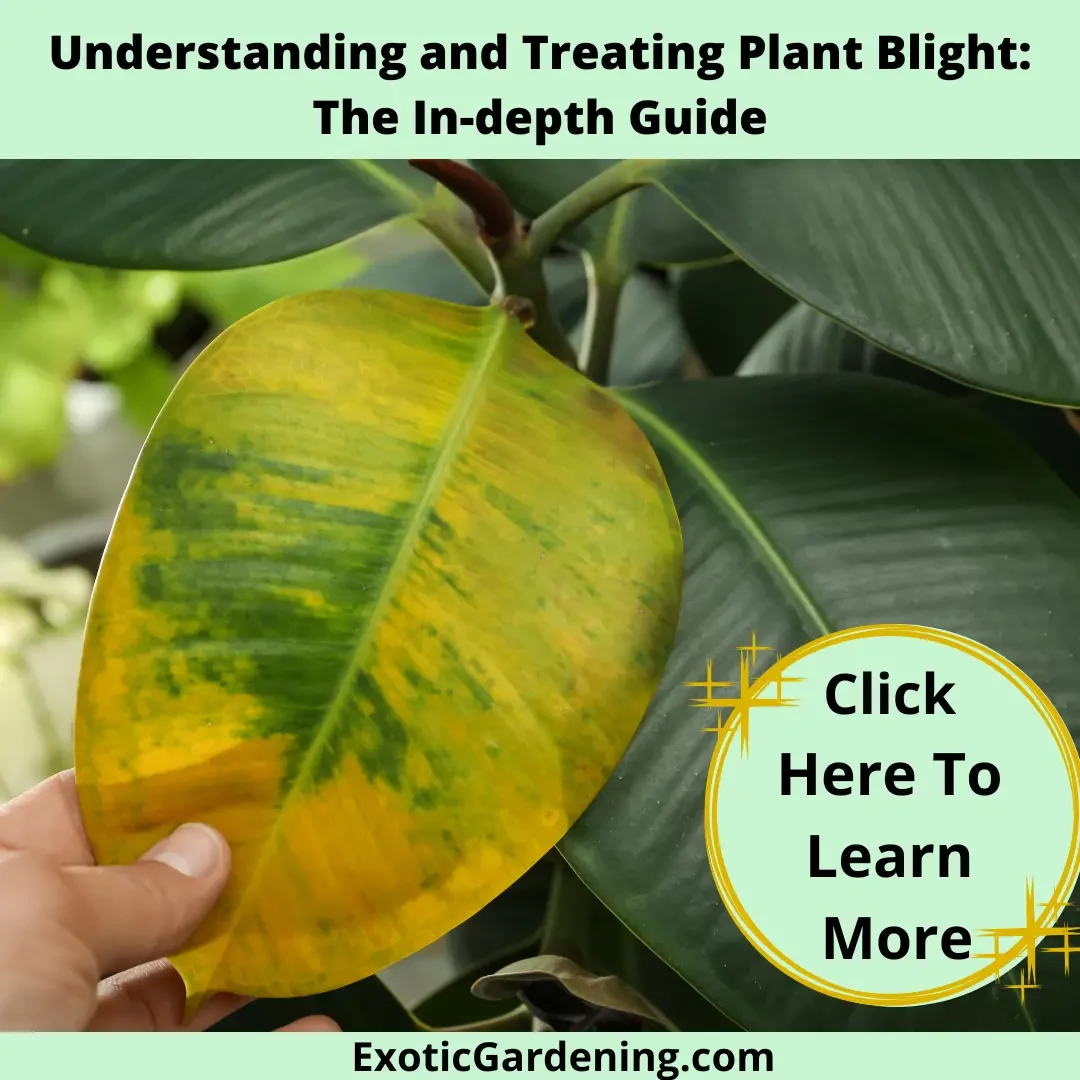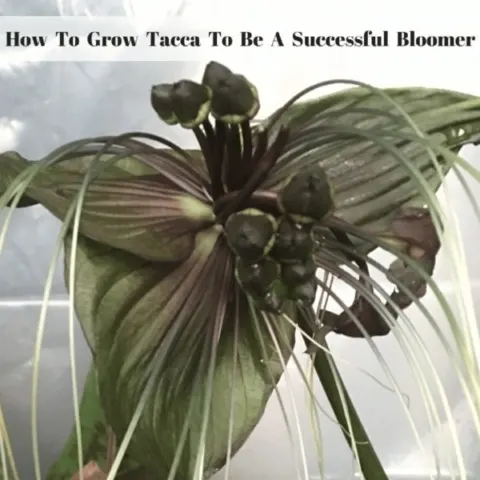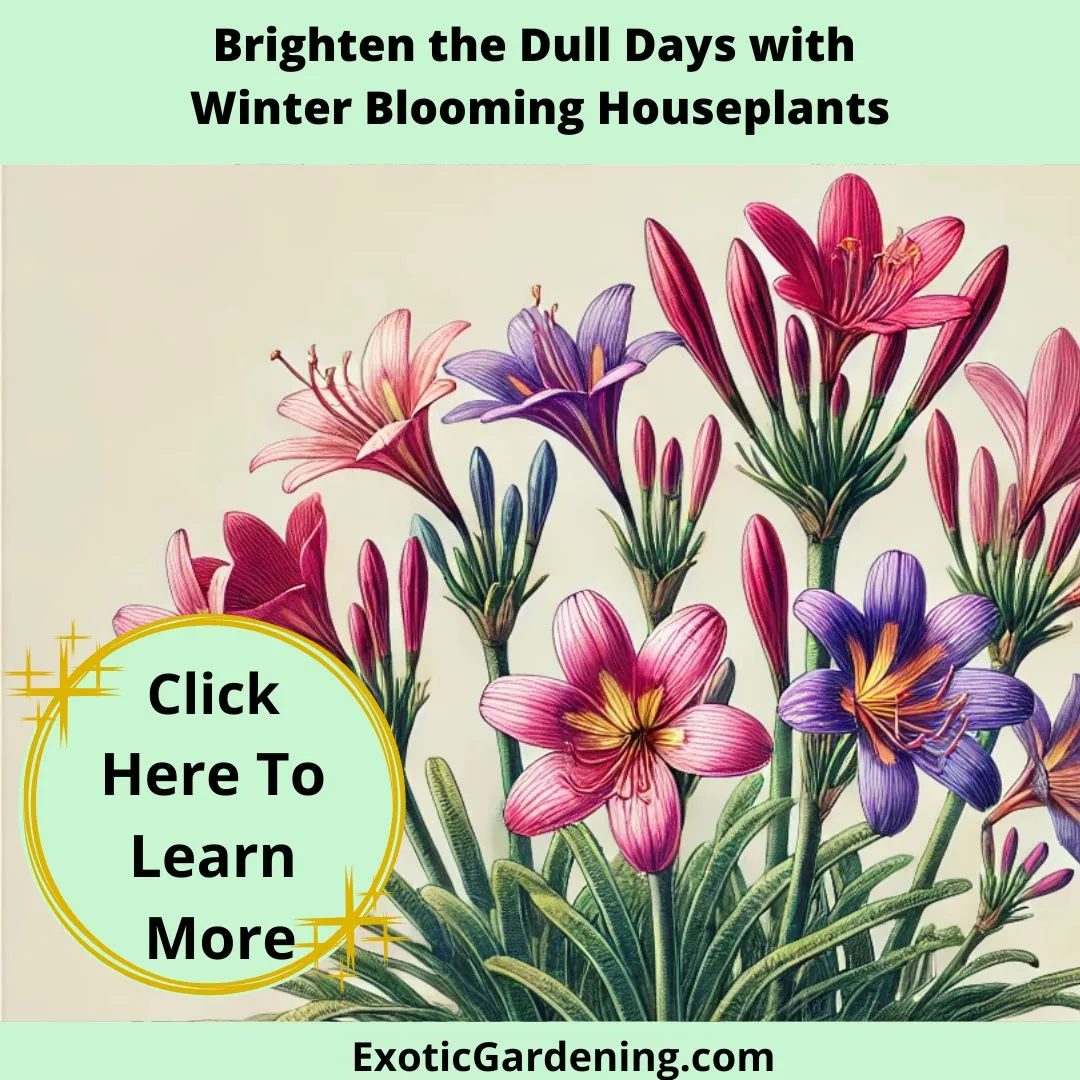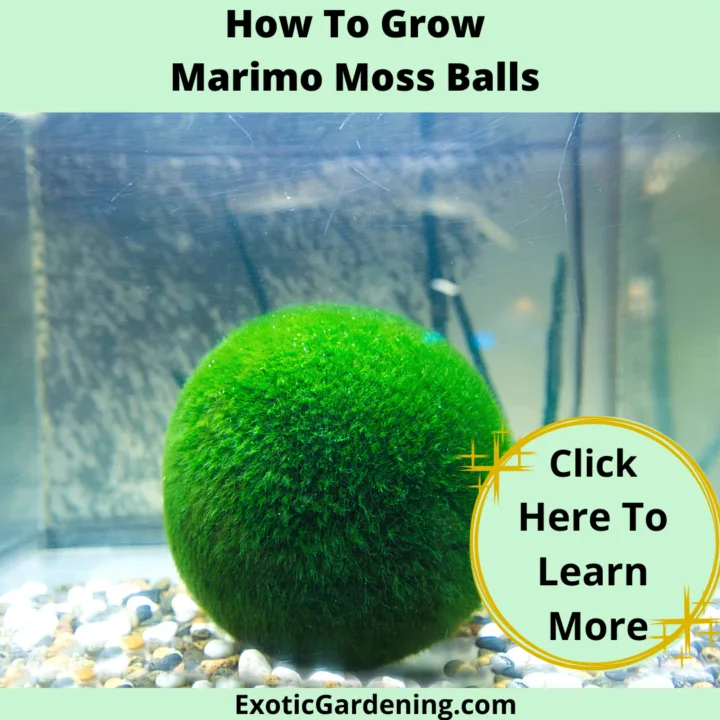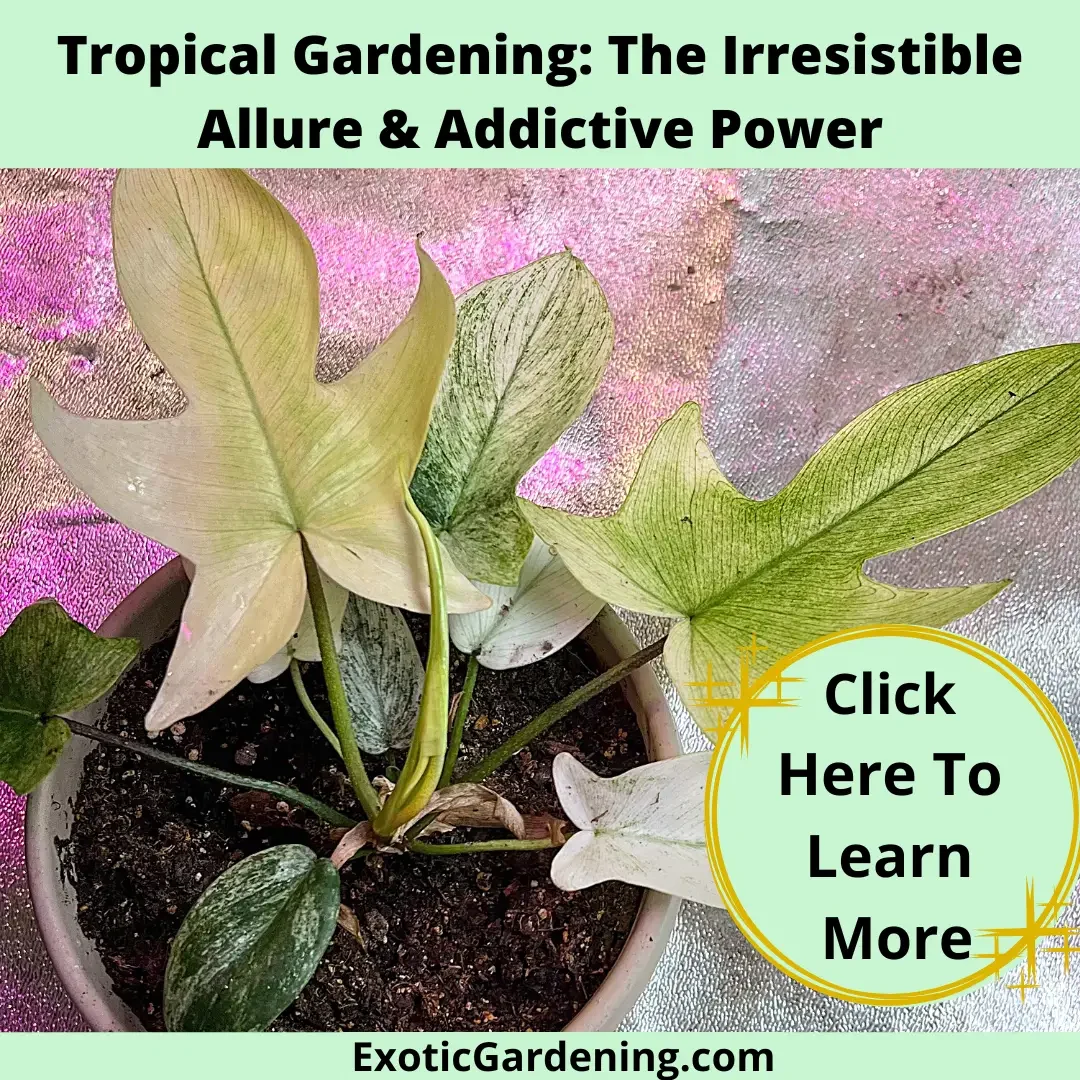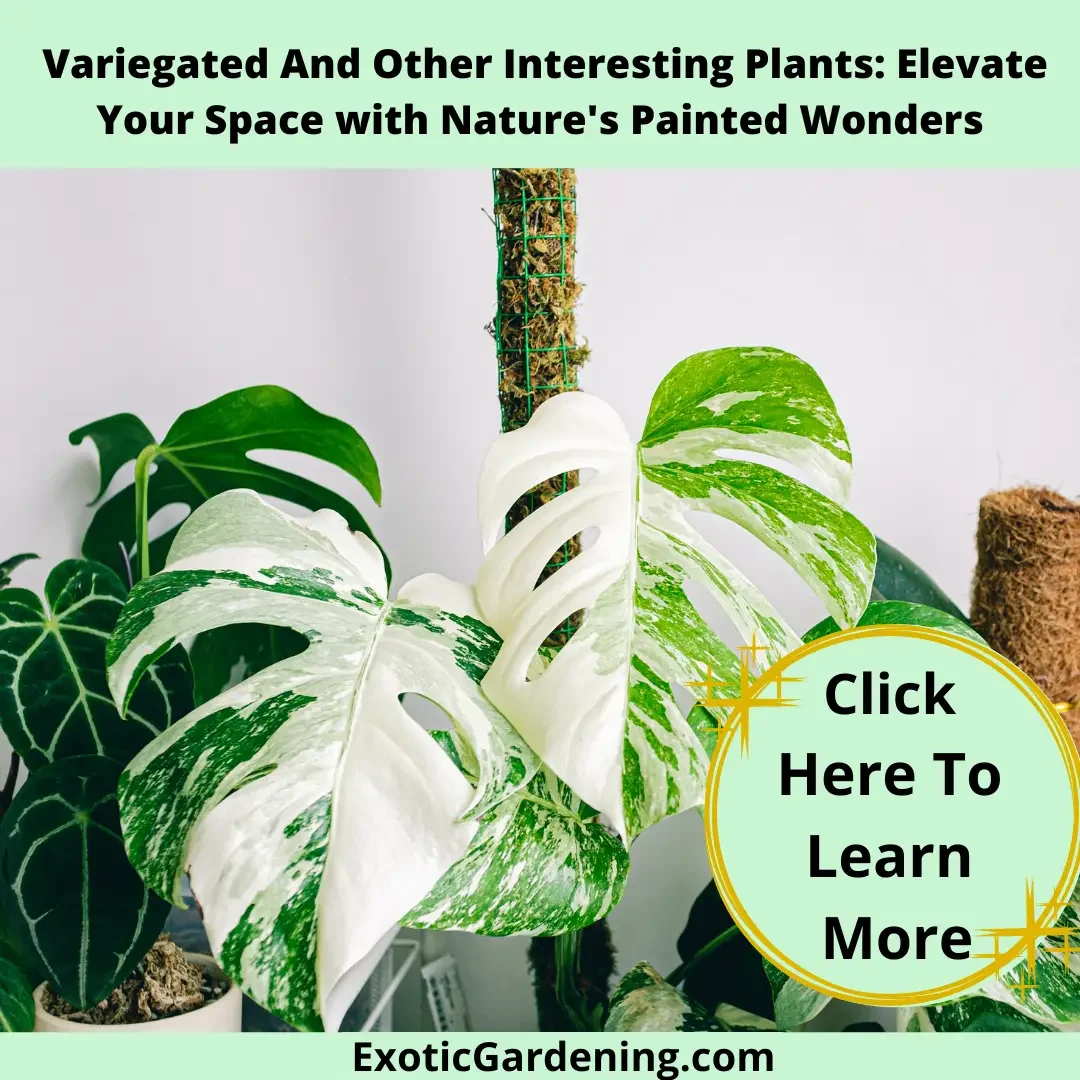Fall tropical plant care is a topic that's incredibly close to my heart.
As the temperatures drop and the leaves change colors, it's essential to ensure your cherished tropical treasures are ready for the colder months.
In this comprehensive guide, I'll walk you through the process of smoothly transitioning your exotic tropical plants for the upcoming fall season, offering invaluable tips on acclimatization and proper care.
Transitioning your tropical plants goes beyond protecting them from harsh outdoor conditions; it's about ensuring their continued growth and well-being.
By bringing them indoors, you create a controlled environment where you can provide the necessary warmth, humidity, and light they need to thrive.
This transition process is crucial for maintaining their health and preventing any potential damage that could occur if they were left outside.
In the following sections, we'll delve into why transitioning your tropical plants is so important, the step-by-step process to do it successfully, indoor care tips to keep them happy during the fall and winter, and how to prepare them for their eventual return to the outdoors in the spring.
So, let's embark on this journey together and make sure your tropical treasures are well-prepared for the changing seasons ahead.
Why Transition Your Tropical Plants?
Transitioning your tropical plants is not only about protecting them from the harsh outdoor conditions but also about ensuring their continued growth and well-being.
By bringing them indoors, you create a controlled environment where you can provide the necessary warmth, humidity, and light they need to thrive.
This transition process is crucial for maintaining their health and preventing any potential damage that could occur if they were left outside.
First things first, you might be wondering why transitioning your tropical plants is necessary.
Well, it all comes down to providing the best care for your green friends.
Most tropical plants thrive in warm and humid conditions.
As the mercury dips, the outdoor environment becomes less hospitable for them.
Bringing them indoors for the fall and winter ensures they stay healthy and happy.
During the colder months, the temperature drops significantly, and frost can damage or kill tropical plants that are not adapted to such conditions.
By transitioning them indoors, you protect them from these extreme temperature changes and provide a stable, controlled environment.
This allows them to continue growing and thriving, rather than going into a dormant state or suffering from stress.
In addition to temperature, humidity is another crucial factor for tropical plants.
The dry air of the fall and winter months can cause their leaves to dry out and wilt.
By bringing them indoors, you can maintain a higher humidity level, which is essential for their overall health and vitality.
This helps to prevent issues such as leaf browning, leaf drop, and stunted growth.
Furthermore, tropical plants require a certain amount of light to photosynthesize and produce energy.
As the days get shorter during the fall and winter, natural light becomes limited.
By transitioning your plants indoors, you can provide them with adequate artificial light to supplement their needs.
This ensures they receive the necessary light energy to sustain their growth and maintain their vibrant foliage.
The Transition Process
When it comes to transitioning your tropical plants, there are a few key steps to follow to ensure a smooth and successful process.
Timing, inspection, pruning and repotting, and acclimatization are all important factors to consider.
- Choose the Right Time: One of the key things to consider when transitioning your tropical plants is timing. I usually start the process in late summer, just before the first frost is due. This gives the plants time to adjust before the cold really sets in. By transitioning them indoors at this time, you can avoid any potential damage from sudden drops in temperature.
- Inspect for Pests: Before bringing your plants inside, it's crucial to give them a thorough once-over. Check for any unwanted hitchhikers like pests and spiders. You definitely don't want to introduce these to your indoor garden! If you spot any pests, take appropriate measures to eliminate them before bringing your plants indoors. This will help to prevent any infestations and keep your indoor environment pest-free.
- Pruning and Repotting: As you prepare to transition your tropical plants indoors, it's also an excellent time to prune them and repot them if needed. Pruning helps to remove any dead or damaged growth, allowing the plants to focus their energy on healthy new growth. Repotting, on the other hand, provides an opportunity to refresh the soil and ensure that your plants have access to the necessary nutrients throughout the winter months. Be sure to use a well-draining potting mix and choose a pot that allows for proper root growth.
- Acclimatization: The most crucial phase of transitioning your tropical plants is acclimatization. Your tropical beauties have been basking in the sun and soaking up the moisture outside. Introducing them to the dry, indoor environment should be done gradually to prevent shock and stress to the plants. Start by placing them in a shaded indoor spot for a few hours each day and gradually increase their exposure over a week or two. This will allow them to adjust to the lower light levels and drier air indoors. During this acclimatization period, it's important to monitor your plants closely for any signs of stress or damage and make adjustments as needed.
By following these steps, you can ensure a successful transition for your tropical plants.
Choosing the right time, inspecting for pests, pruning and repotting, and acclimatizing gradually will help to minimize stress and maximize the health and well-being of your plants as they adjust to their new indoor environment.
With proper care and attention, your tropical treasures will thrive throughout the fall and winter months, ready to be enjoyed again outdoors when spring returns.
Indoor Care Tips
Once your tropical treasures are safely indoors, here are some tips to ensure they thrive:
- Light: Adequate light is essential for the health of your tropical plants. Many tropical plants love bright, indirect sunlight. Consider placing them near a south or west-facing window to provide them with the right balance of light. If natural sunlight is limited, you can also use grow lights to supplement their light needs. Position the lights about 12 inches above the plants and keep them on for about 12-14 hours a day.
- Humidity: Indoor environments can get pretty dry, especially in the winter when we're heating our homes. Invest in a humidity tray or a room humidifier to keep the air moist around your plants. These devices help to mimic the tropical conditions that your plants are accustomed to. You can also mist your plants regularly with water to boost humidity. Be sure to avoid misting plants with fuzzy leaves, as this can lead to fungal diseases.
- Watering: Adjust your watering routine to meet the needs of your tropical plants. While it's important not to overwater, you also don't want to let your plants dry out completely. The soil should be kept consistently moist, but not soggy. Check the specific watering needs of your tropical plants, as they can vary. Some plants prefer to dry out slightly between waterings, while others like to be consistently moist. Use your finger to check the moisture level of the soil before watering.
- Temperature: Maintain a comfortable temperature range for your tropical friends. Most tropical plants prefer temperatures between 65-75°F (18-24°C). Avoid placing them near drafty windows or heaters, as these can cause temperature fluctuations that can stress your plants. Keep them away from cold drafts and ensure they are not exposed to temperatures below 50°F (10°C).
- Fertilizing: In the fall and winter, your plants are in a semi-dormant state, so reduce the frequency of fertilizing. Feed them sparingly, typically every 4-6 weeks, using a balanced, water-soluble fertilizer. Dilute the fertilizer to half the recommended strength to avoid overfeeding. Remember to always follow the instructions on the fertilizer packaging for best results.
- Pest Control: Keep an eye out for indoor pests, as they can be a problem in the closed environment of your home. Regularly inspect your plants for any signs of infestation, such as yellowing leaves, sticky residue, or tiny insects. If you spot any issues, take immediate action to control the pests. You can use organic pest control methods like neem oil or insecticidal soap, or consult with a local garden center for appropriate pest control products.
By following these indoor care tips, you can provide the optimal conditions for your tropical plants to thrive throughout the fall and winter months.
Remember to monitor your plants closely and make adjustments as needed to ensure their health and well-being.
Preparing for the Spring Return
As winter gives way to spring, it'll be time to transition your tropical plants back outside.
Just like bringing them indoors, this process should be gradual.
Here is a step-by-step guide you can follow:
- Begin by placing them in a shaded spot outdoors for a few hours a day and gradually increase their exposure to full sunlight. This gradual transition will help your plants adjust to the change in light intensity and prevent them from getting sunburned. Before moving your plants outside, it's a good idea to repot them if necessary.
- Check the root system and if it's become root-bound, gently loosen the roots and transfer the plant to a larger pot. Use a well-draining potting mix to ensure proper drainage. Repotting will give your plants fresh soil and room to grow, promoting healthy root development.
- While repotting, take the opportunity to prune your tropical plants. Remove any dead or damaged leaves, as well as any leggy or overgrown branches. Pruning will help maintain the shape and size of your plants and encourage new growth. Be sure to use clean, sharp pruning shears to avoid damaging the plant.
- Once your plants are repotted and pruned, it's time to gradually reintroduce them to the outdoor environment. Start by placing them in a shaded area, such as under a tree or on a covered porch, for a few hours a day. This will allow them to acclimate to the outdoor temperature and humidity.
- Over the course of a week or two, gradually increase their exposure to full sunlight. During this transition period, continue to monitor your plants closely. Keep an eye out for any signs of stress, such as wilting or yellowing leaves. If necessary, adjust their placement to provide more shade or protection from strong winds.
- Water your plants regularly, but be careful not to overwater. The soil should be moist, but not waterlogged.
- As your plants adjust to their outdoor environment, they will start to thrive and show signs of new growth.
- Continue to provide them with proper care, including regular watering, fertilizing, and pest control.
- Keep an eye out for any pests that may be attracted to your plants, such as aphids or mealybugs, and take appropriate measures to control them.
Keep Your Tropical Plants Thriving Year-Round
As we wrap up this journey of transitioning your tropical plants for the fall and winter, remember that preparing them for their spring return is an essential step in their overall care.
By gradually acclimating them to the outdoor environment and providing proper repotting and pruning, you can ensure their successful transition.
With just a little bit of effort and attention, your tropical treasures will continue to bring beauty and joy to your outdoor space.
As always, I'd love to hear about your experiences with transitioning tropical plants or any questions you might have.
Share your thoughts in the comments, and let's keep the conversation blooming!
Discover the Joy of Houseplants: Your Ultimate Resource Guide
Welcome to the ultimate guide for all things houseplants! Whether you’re a seasoned green thumb or just starting your indoor gardening journey, this curated list of articles has something for everyone. From detailed care instructions to creative decorating ideas, troubleshooting common issues, and learning about unique plant varieties, you’ll find everything you need to keep your indoor jungle thriving.
Explore topics like:
Essential care tips for popular houseplants.
Solutions to common problems like pests, watering mistakes, and lighting challenges.
Creative ways to display and style your plants.
Propagation guides to grow your collection.
Get inspired, troubleshoot challenges, and cultivate the lush, vibrant indoor space you’ve always dreamed of. Dive in and let your houseplants flourish with these helpful resources!
Mastering South-Facing Window Plants: Expert Tips for Your Lush Oasis
Discover the secrets of success with South-Facing Window Plants in our comprehensive guide. Transform your space into a green haven.
Transform Your Cozy Corner with these Perfect Plants for Small Spaces
Discover the beauty of compact gardening with our guide on choosing and caring for plants for small spaces.
The Complete Guide to Philodendron Pink Princess Care
Introducing the Philodendron Pink Princess
Allow me to introduce you to the crown jewel of my botanical collection – the enchanting Philodendron Pink Princess.
This recent addition is nothing short of a horticultural masterpiece, captivating the senses with its breathtaking display of colors.
Imagine deep, luxurious burgundy leaves, each adorned with bold splashes of vivacious pink.
The contrast is nothing short of a visual symphony, a natural work of art that commands attention.
As I gazed upon it for the first time, I couldn't help but marvel at the sheer beauty and grace that this plant exudes.
If you've never had the pleasure of setting your eyes on a Philodendron Pink Princess, consider yourself in for a treat beyond compare.
It's more than a plant; it's a showstopper, a conversation piece, and a living testament to the wonders of the natural world.
This captivating botanical gem promises to be a source of endless fascination and admiration in any space it graces.
Spider Plants: The Perfect Gateway Plant for Gardening Enthusiasts
Spider plants, the perfect gateway plant, add charm, purify air, and are ideal for beginners and seasoned gardeners alike.
Spider Plant Light Requirements: A Key to Growth
Explore Spider Plant light requirements for thriving indoor growth. Learn key tips for optimal lighting conditions and vibrant greenery.
How to Grow Spider Plants
Discover how to grow spider plants with expert tips on light, watering, soil, and more for thriving plants!
5 Creative Spider Plant Display Ideas for Your Home
Discover creative spider plant display ideas to elevate your home decor with unique, stunning, and easy-to-implement solutions.
5 Fun DIY Projects with Spider Plants
Explore creative DIY projects with Spider Plants, including terrariums, macramé hangers, and upcycled planters for vibrant decor.
10 Fascinating Facts About Spider Plants You Didn’t Know
Discover fascinating facts about spider plants, including their care, propagation, and unique qualities that make them standout houseplants.
Top 10 Common Spider Plant Problems and How to Fix Them
Discover solutions to common spider plant problems like brown tips, yellow leaves, and droopy growth to keep them thriving.
How to Propagate Spider Plants: A Step-by-Step Guide
Learn how to propagate spider plants with easy, step-by-step instructions to grow vibrant, healthy indoor plants effortlessly.
Rustic Interior Decorating Idea With Tropical Plants
Metal cages or even old bird cages filled with plants are a great way to add a rustic touch to your interior decor.
Plumeria: The Lei Flower Is A Fragrant, Easy To Grow Houseplant
Learn how to care for your Plumeria in ground and in containers. Because of the winter dormancy period it is ideal for summer containers.
Indoor Flowering Tropical Plants
There are a number of indoor flowering tropical plants that are easy to care for and bloom all winter long under the right conditions.
How To Grow Boswellia sacra
Boswellia sacra is the plant frankincense tears comes from. Learn how to grow the Boswellia sacra plant and what the various uses for it are.
6 Easy Tips On How To Care For Plants
Proper plant maintenance is essential if you want to learn how to grow healthy plants. Check out these six tips on how to care for plants.
Beneficial Indoor Gardening Plants You Need To Know
Learn about indoor gardening beneficial plants that are edible, help heal minor cuts or burns or those that help remove impurities from the indoor air.
How To Choose The Right House Plants For Indoor Gardening
Choosing the right plants for an indoor gardening environment is important for success. Many indoor gardening house plants are easy to care for.
How To Care For Holiday Plants
Have you ever wondered how to care for holiday plants such as the Poinsettia or the Christmas Cactus? If so, then check out this holiday plant care guide
Understanding and Treating Plant Blight: The In-depth Guide
Master treating plant blight with expert tips. Learn to protect your garden from this common threat. Essential insights inside.
Fall Tropical Plant Care: Transitioning Your Tropical Treasures in Autumn
Discover the secrets of successful Fall Tropical Plant Care. Learn how to transition your exotic plants for a thriving winter indoors.
Eucalyptus Growing Indoors: Tips and Troubleshooting Guide
Discover the art of eucalyptus growing indoors for year-round beauty and fragrant cut foliage in your flower arrangements.
When to use Fluval Stratum for Houseplants
Discover the perfect timing to use Fluval Stratum for houseplants and unlock vibrant growth in your indoor oasis. Learn more here.
How To Grow Bay Leaves Indoors
Discover the secrets of successful gardening with our guide on how to grow bay leaves indoors. Cultivate your own aromatic herb garden!
Easy Exotic Houseplants: Tropicals That Thrive Indoors in Containers
Tropical plants are the most beautiful, easy to grow indoor houseplants. Start growing exotic houseplants today that fruit and flower!
Brighten Up The Dull Days Of Winter With Blooms
Discover vibrant winter blooming houseplants that brighten your home with color and fragrance during the colder months.
Tips For Making A Moth Orchid Last From Costa Farms
Successful orchid care is pretty easy once you understand the seven basic steps the plant needs to thrive in your home environment.
Meet The Exotic Pitcher Plants - Sarraceniaceae, Nepenthaceae And Cephalotaceae
Learn about the exotic pitcher plants known as Sarraceniaceae, Nepenthaceae And Cephalotaceae including how to propagate them.
How To Grow Marimo Moss Balls
Learn how to grow Marimo Moss Balls and how to care for a moss ball to keep it happy. A Luffy ball is a very low maintenance plant.
Tropical Gardening: The Irresistible Allure & Addictive Power
Unveil the Addictive Allure of Tropical Gardening – From Starter Plants to Care Tips. Dive into #TropicalGardening!
Variegated And Other Interesting Plants: Elevate Your Space with Nature's Painted Wonders
Explore the world of variegated and unique plants, adding vibrant beauty and intrigue to your indoor oasis.
Tropical Plants For Medium To High Light
Check out these awesome tropcial plants for medium to high light that make wonderful, easy to care for houseplants.
How To Grow Tropical Plants
Growing tropical plants - also known as houseplants - indoors is fun and enjoyable plus many of them clean the indoor of pollutants.
It is easy to grow exotic looking plants that produce tropical fruit and colorful flowers in a pot in your living room or office.
Many of these plants are easy to start from seed and I share with you five plants that I recommend for indoor growing.
I also share with you why growing your own tropical fruit saves money.
In this video you will learn:
How to bring tropical plants indoors at the end of summer
How to grow tropical plants indoors
How to protect and overwinter tropical plants outdoors in cold climates
How to propagate tropical plants
How to water tropcial plants
How to grow topical plants in a greenhouse



